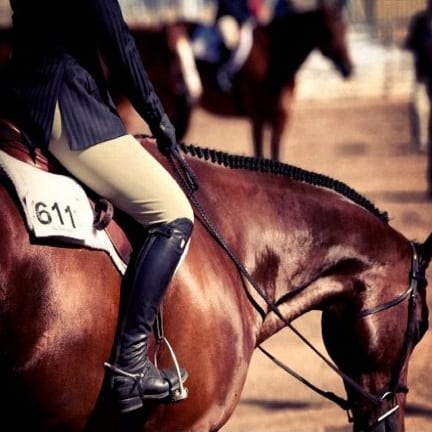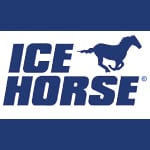Want to know what drives judges crazy in hunt seat equitation and how to improve your scores in the show pen? The industry’s top judges I spoke with, Kelly Boles Chapman, Christa Baldwin, Lainie DeBoer, Carla Wennberg and Jerry Erickson, all have pet peeves or hot buttons when it comes to this class. However, they also offer great advice on how to fix them which will ultimately result in you becoming a better rider and receiving a higher score. There is definitely a common theme throughout. See if you can figure it out before the end. The advice given provides years of valuable knowledge. Good luck and have fun learning.
1. Shorten your irons.
“It makes me want to stop the class and adjust rider’s stirrups every time I judge an equitation class and see exhibitors with their heels in the air because their irons are too long,” Kelly Boles Chapman stated. “They post, or rather bounce, off their seat and the cantle of the saddle. I just want to give them a quick lesson. I would tell them that riders cannot be in the correct position if their stirrups are not properly adjusted.” Chapman’s solution is “longe line exercises with no reins. Lots of two-point! If riders can master balance on timing on the longe line without using their horse’s mouth to balance, it makes patterns and other riding on the flat seem more natural.”
2. Be in the Correct Position.
“Position, position, position,” repeated Lainie DeBoer. She told me the biggest mistake she sees riders make is riding with incorrect position. “Why would you want to start out with a negative score because you have a weak position?” Lainie indicated she agrees with Kelly Chapman’s use of longe line exercises and suggests “riders should concentrate on the basics of a natural position that shows that they have a clear relationship with their horse with a connection that is between their leg and their hands. You can practice balancing exercises that develop seat and leg. Two-point position to increase leg strength, heal depth, and lower leg control. Lots of work on the lunge line without reins to show that different body parts can move independently from one another. All these ideas can help build a core position that will put you in an excellent overall category so you can gain more points and be a better more effective rider on pattern.”
3. Get Connected.
“Hunter seat is about moving the horse from your leg aids to your hands,” indicated Carla Wennberg. “This means your legs activate the energy of the horse’s hind legs and you balance it to your hands. What we call ‘half halts’ is stabilizing the energy and balance to your hands from the RPMs of the hind end tracking up and an exercise she teaches all her riders.
“Why the need for a connection? To lengthen or shorten the stride and to guide your horse. Work on this diligently on your flat work,” Carla advised. It is an exercise that increases your connection and allows you to move “to and from the sitting trot, posting trot, lengthened stride in the trot, working canter, collected canter and hand gallop – all necessary transitions for flat work. Connection is important in all gaits, not a loose rein. You can have a soft rein aid, but there should always be a feel to the hand – the horse is confident in this feel – not afraid of the feel of your hands. Connection and confidence of feel – this is what I find most misunderstood in the flat work. Some people do this beautifully, some never develop feel. A connection is the most important aspect of riding the horse. Riding the body of the horse with leg and seat and moving the horse up to the Hand. Lessons from a qualified instructor are the best help for riders serious about improving. We (judges) know from your feel and confident hands and your score will reflect your understanding and connection.”
4. Keep Your Horse Forward.
Jerry Erickson agreed with Carla. It is the rider’s connection that keeps the horse engaged in the correct gait. Jerry indicated, “Many riders incorrectly think moving forward means more speed. Yes, the pace may have increased – but due to a lengthening of the stride rather than simply turning the reins loose and kicking the horse along.
“The riders who impress me are the ones who demonstrate the ability to maintain light connection with the mouth, while reaching deeply into their legs and pressing the horse forward to the bit. The rider’s position basically remains the same yet the pressure from the rider’s long leg lengthens the stride thus a more forward pace results.” Jerry, like all of the quoted judges, believes that form follows function and if riders maintain the proper form (noted in #1 and #2 above), they will develop the feel so they can keep the horse engaged as explained in #3.
5. Know Your Diagonals.
Diagonal are not last on the list, but before you can have the skills to feel your diagonals, you are going to have to achieve the skills described in #1 through 4. Christa Baldwin tells riders it is like, “the kiss of death” to miss your diagonals. When judging, asking for diagonals show two important skills, “One – that riders know which diagonal to be on according to what their horse is doing, and two, that the rider has feel for their horse without looking down. Knowing the footfalls of your horse is imperative for good riders. Feeling your diagonals shows you feel your horse and can feel the horse’s legs moving in diagonal pairs.”
Christa teaches riders, “at the beginning, to actually rock their hips slightly with the diagonal they want before they rise. Often when they actually feel which diagonal they are to be on and their muscles relay this to their brain and back to their body to actually rise, the rider is too late and comes up on the wrong diagonal. This has worked well when they are first beginning. To drop down from a canter to rising trot is very easy because your hips are already in the motion of the posting trot.”
According to Christa, “Riders must have great transitions and great feel to accomplish correct diagonals without looking for them. This comes only with lots of riding and putting the hours in the saddle.”
All of the judges agree that the results of time in the saddle is reflected in your score. Each one of them indicated they are looking for the rider with a good feel of their horse. Feel is a difficult thing to teach, thus Carla’s advice to find a good instructor. All of the judges indicated they are looking for the rider with a good connection and proper form who communicates well with their horse.








